PO Box 95
Lyttelton 8841
Te Ūaka recognises Te Hapū o Ngāti Wheke as Mana Whenua and Mana Moana for Te Whakaraupō / Lyttelton Harbour.
LocalEyes on Antarctica: Dr Margaret Bradshaw
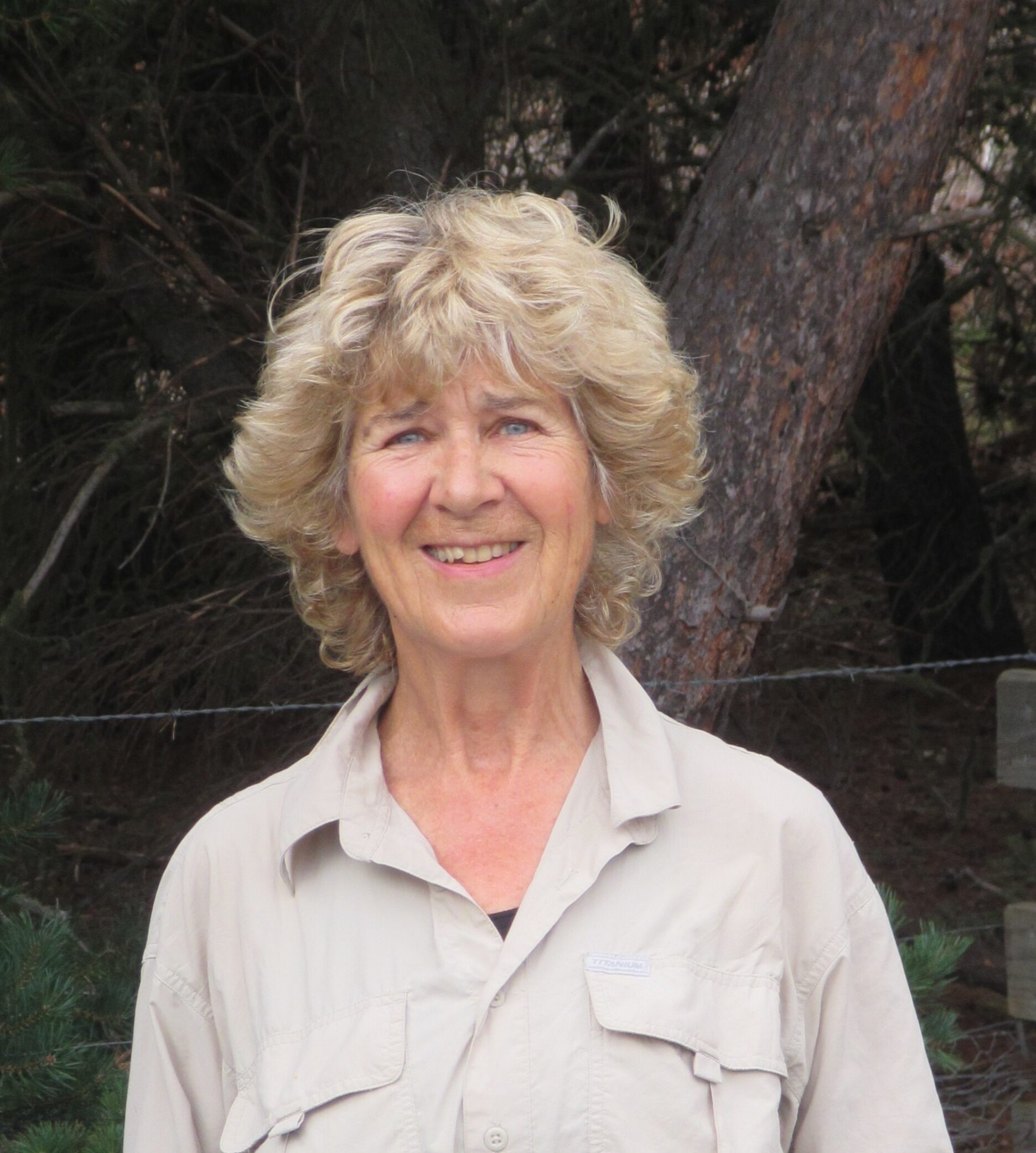
We asked renowned Antarctic scientist and Whakaraupō local Dr Margaret Bradshaw to curate our latest installment of LocalEyes - the Antarctic Special, in conjunction with the Days of Ice programme.
This exhibition will be exhibited here on our website and in the windows of our Museum cabin at 33-35 London Street, Lyttelton.
Guest curator for the Lyttelton Museum LocalEyes Antarctic Special is renowned Antarctic scientist and Whakaraupō local Dr Margaret Bradshaw.
Known in particular for being the first woman to lead an Antarctic deep field party in 1979, she was awarded the Queen's Polar Medal in 1993. Dr Bradshaw’s many seasons on ice have focused on fossils and trackways of early life in the Devonian period (416 million to 358 million years ago), linking her finds to similar age rocks in New Zealand, Australia and South Africa.
As curator for this exhibition all image captions are written by Dr Bradshaw.
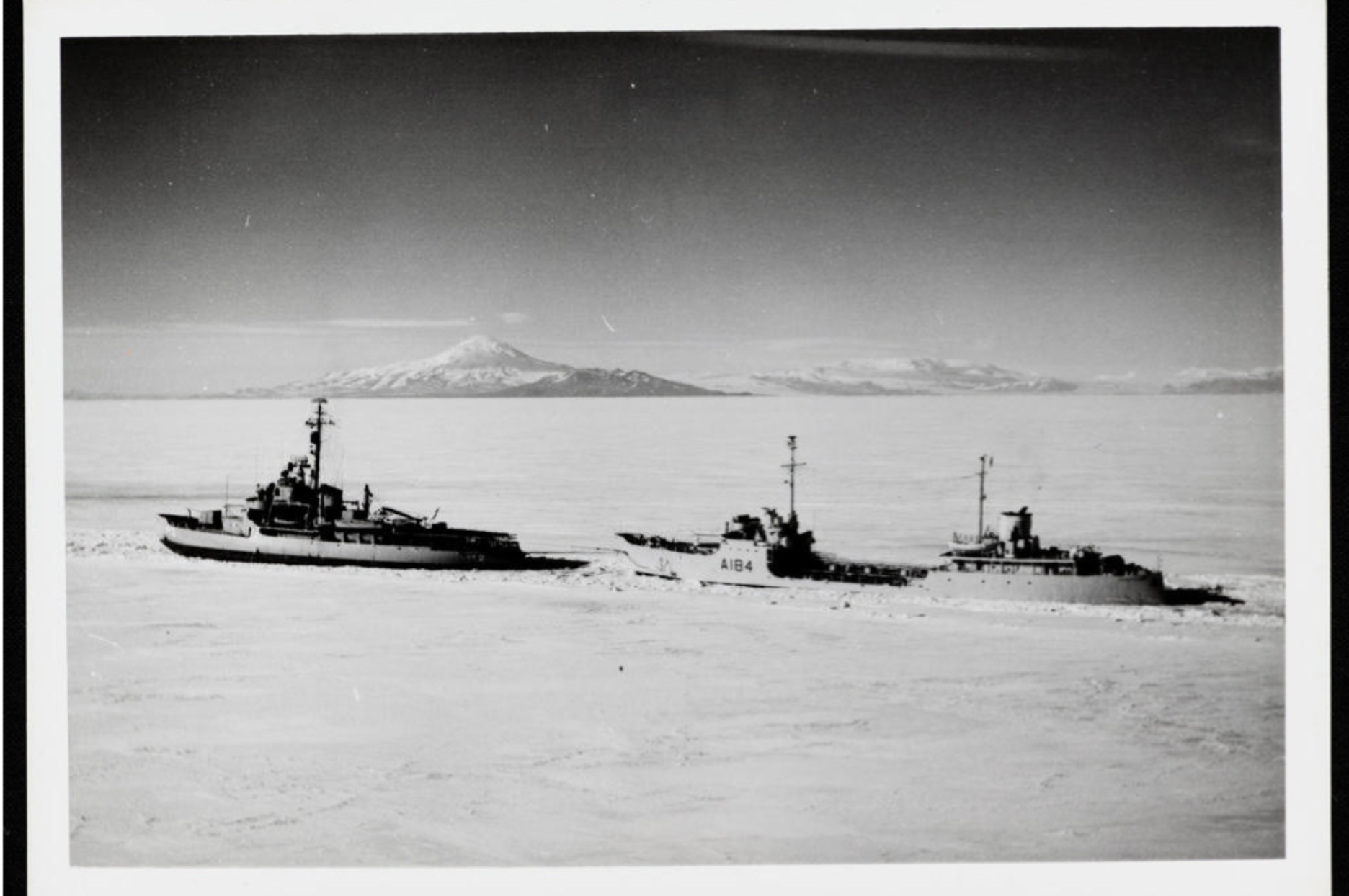
The US Icebreaker ‘Edisto’ followed by H.M.N.Z.S. ‘Endeavour II’ in McMurdo Sound, Antarctica. Official U.S. Navy Photograph. By Photographer's Mate Second Class (Ph2) R.H. Lane, USN. 1963. Te Ūaka The Lyttelton Museum ref. 11829.1
“This photograph taken in 1963 has a lovely balance, with the flat, unbroken white expanse of the frozen sea. In the far distance through the crystal-clear air, there is the volcanic outline of Mt Discovery, and the snow-capped peaks of the Transantarctic Mountains. The New Zealand ship Endeavour II, a fleet oiler, is being towed into frozen McMurdo Sound behind the powerful US Icebreaker Edisto. An earlier ship, Endeavour I, was the supply ship that carried people and materials to build Scott Base in 1956, in support of New Zealand’s contribution to the Commonwealth Trans-Antarctic Expedition.”
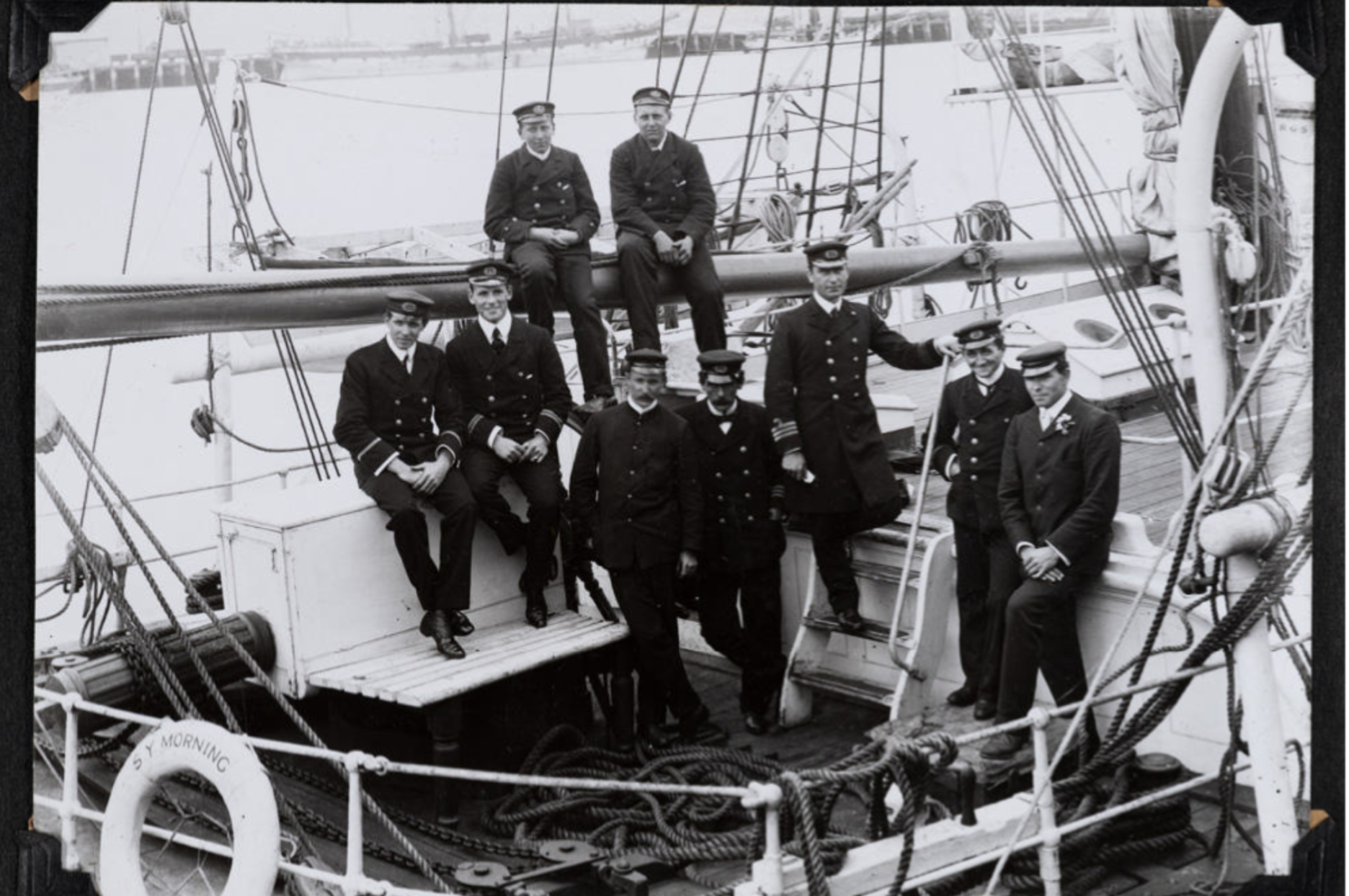
Crew on deck of the ‘Discovery’ in berth at Lyttelton, 1901. Te Ūaka The Lyttelton Museum ref. 14985.37
“I like this image of carefully arranged crew on Scott’s ship ‘Discovery’, while berthed in Lyttelton before departing for the Ross Sea 21 December 1901. The men all look very smart and clean – on their best behaviour in port. I like the pile of thick ropes at their feet. While in Lyttelton the ‘Discovery’ went into dry dock to solve a persistent leak that had ruined stores on the voyage from Britain. ‘Discovery’ used sail for most of its journey to Antarctica but had a coal burner as back-up that was especially useful in the pack-ice.”
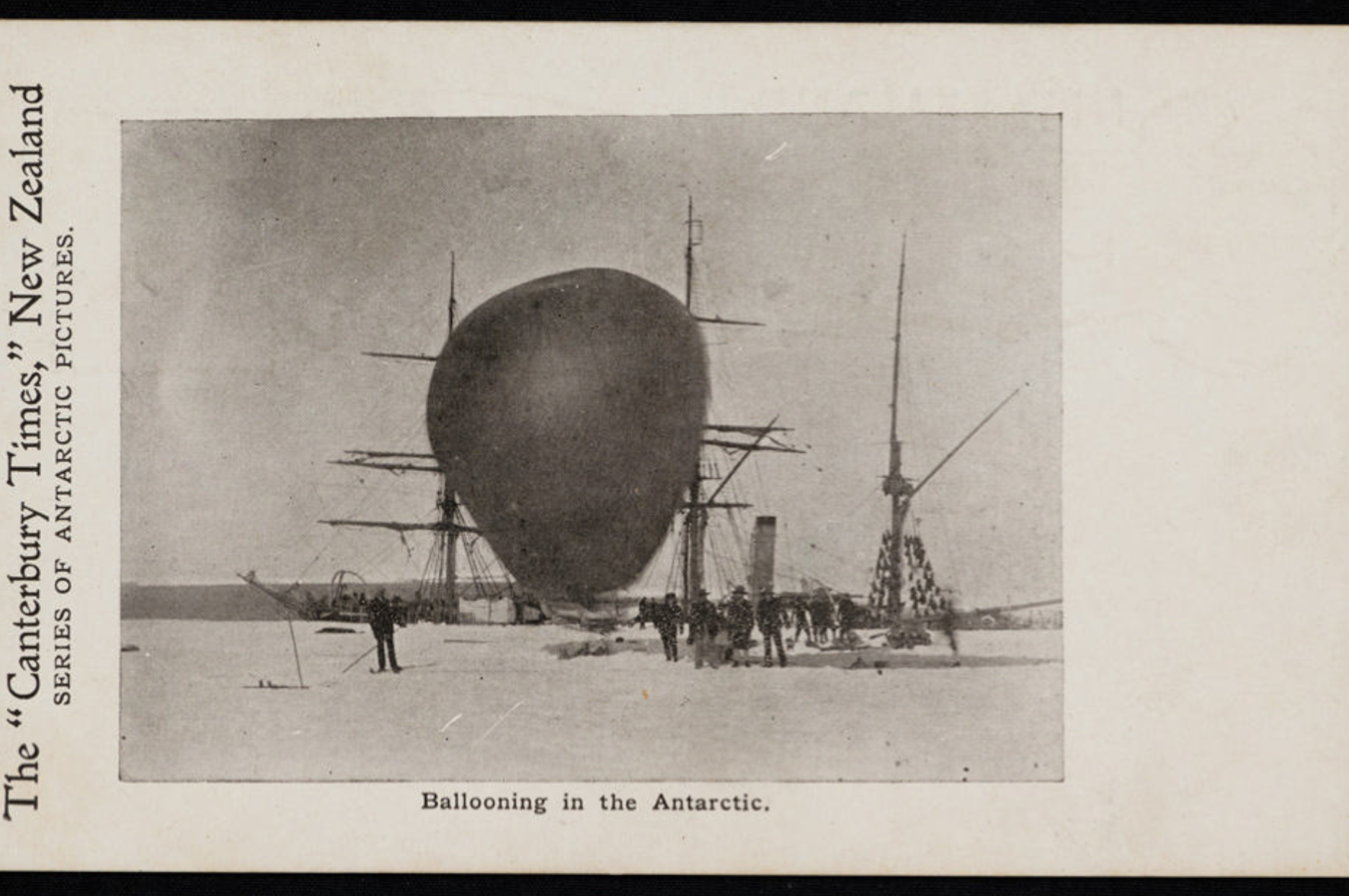
Ballooning in the Antarctic during the 'Discovery Expedition' of 1901-04. Te Ūaka The Lyttelton Museum ref. 9949.1
“After discovering and naming King Edward Land, ‘Discovery’ was anchored to the edge of the thick Ross Sea Ice Barrier. Note the ship’s funnel for the auxiliary engines. Scott was the first person in Antarctica to rise (800 feet) above the Barrier in a basket suspended below a giant balloon called ‘Eva’. From that height he could see a gently undulating, enormous white plain stretching south – The Ross Ice Shelf.”
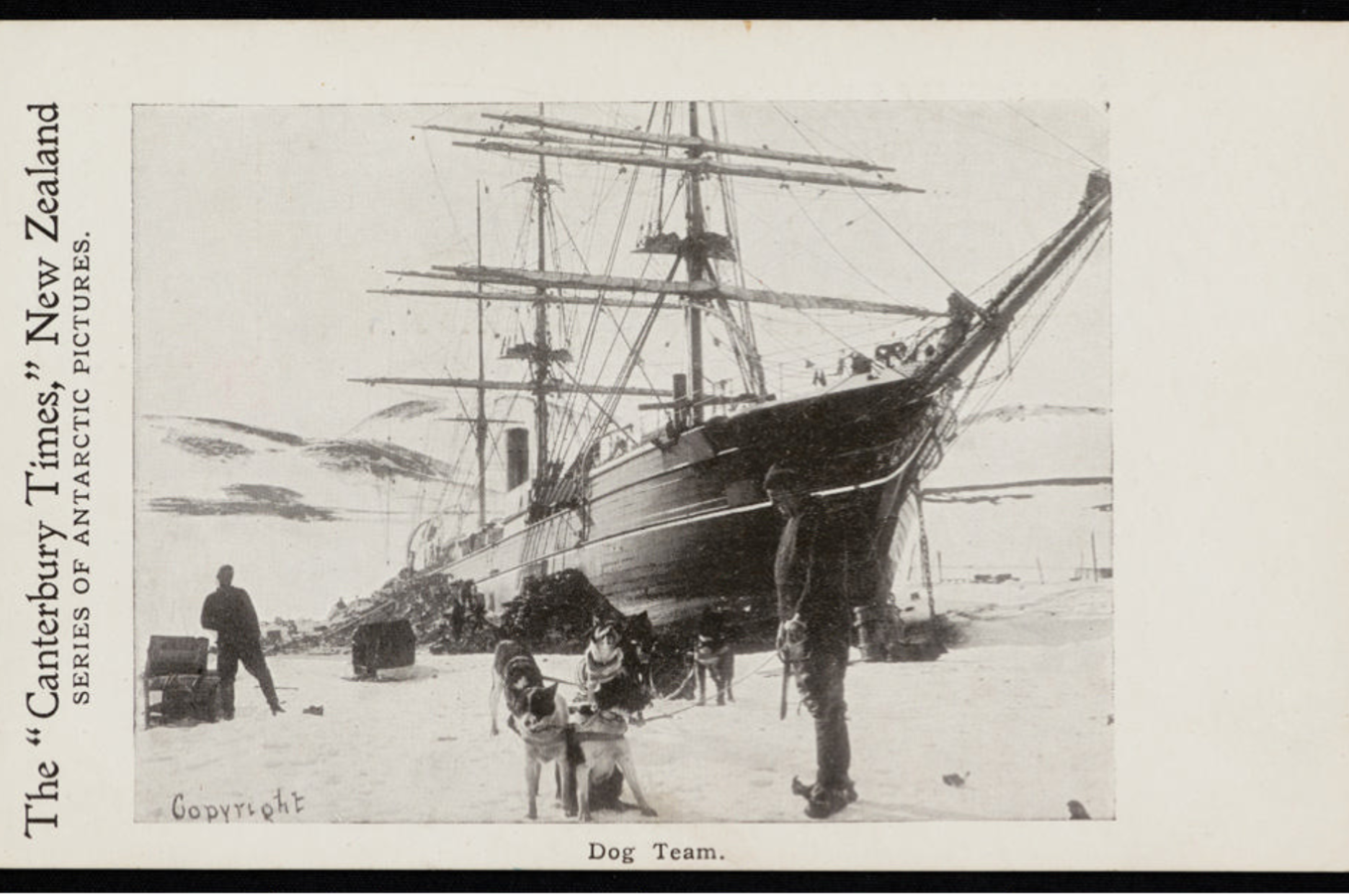
Dog team on the ice in Antarctica during the 'Discovery Expedition' of 1901-04. Te Ūaka The Lyttelton Museum ref. 9947.1
“The ‘Discovery’ was deliberately frozen into the ice at the end of McMurdo Peninsula (Hut Point) on Ross Island for the duration of the expedition 1902-1904. Stores and dogs were offloaded straight onto the ice.”
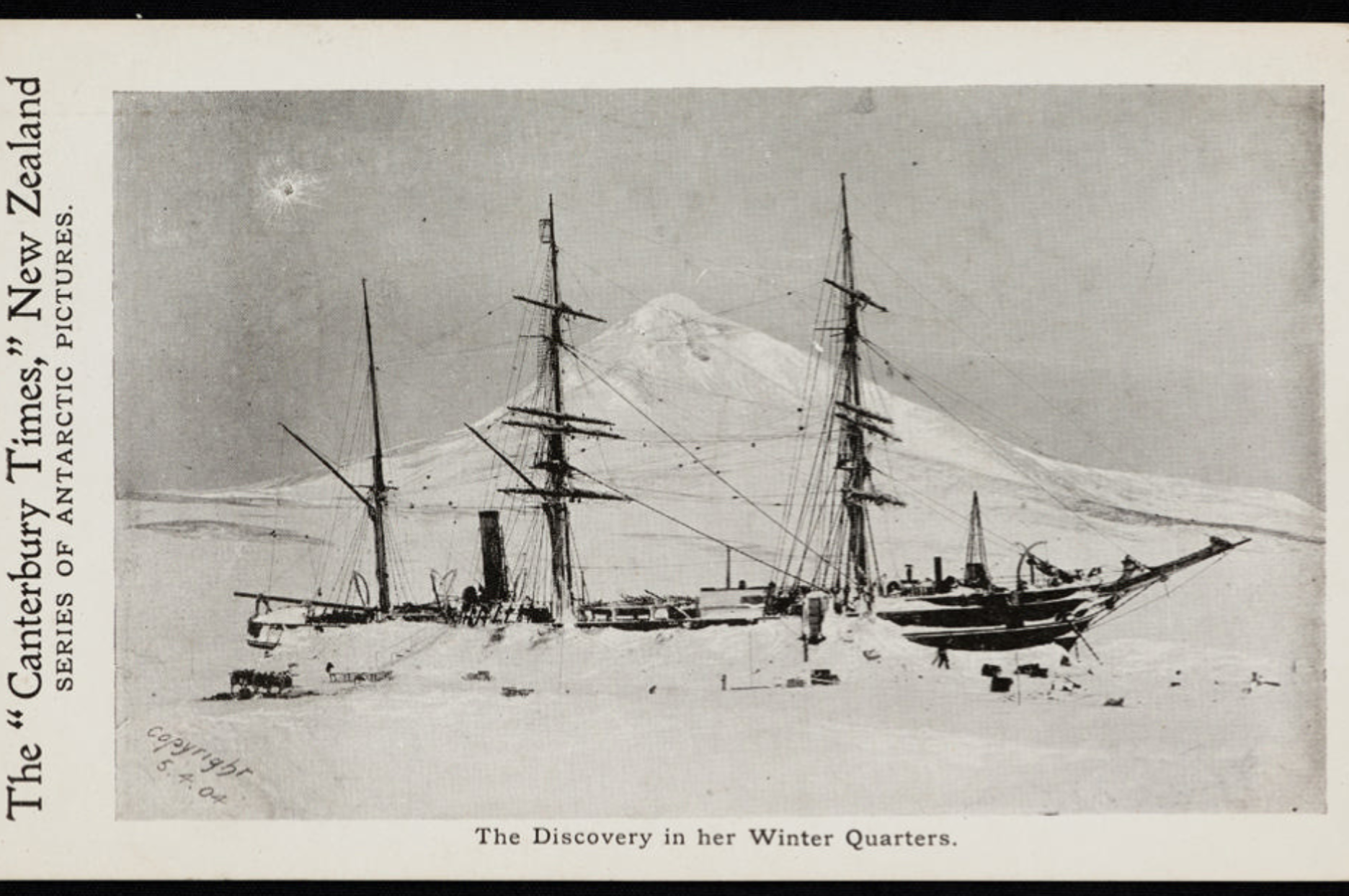
The ‘Discovery’ in winter quarters, 5 April 1904. Te Ūaka The Lyttelton Museum ref. 9877.1
“A snowy ‘Discovery’ in winter quarters with Observation Hill in the background. 47 men lived on this ship which couldn’t have been very warm or well ventilated. The intended accommodation was the hut newly built on the adjacent Hut Point. Based on an Australian outback design, it unfortunately proved too hard to heat and was instead used for scientific observations, drying and repairing equipment and also for entertainment such as theatre and talks by the team members.”
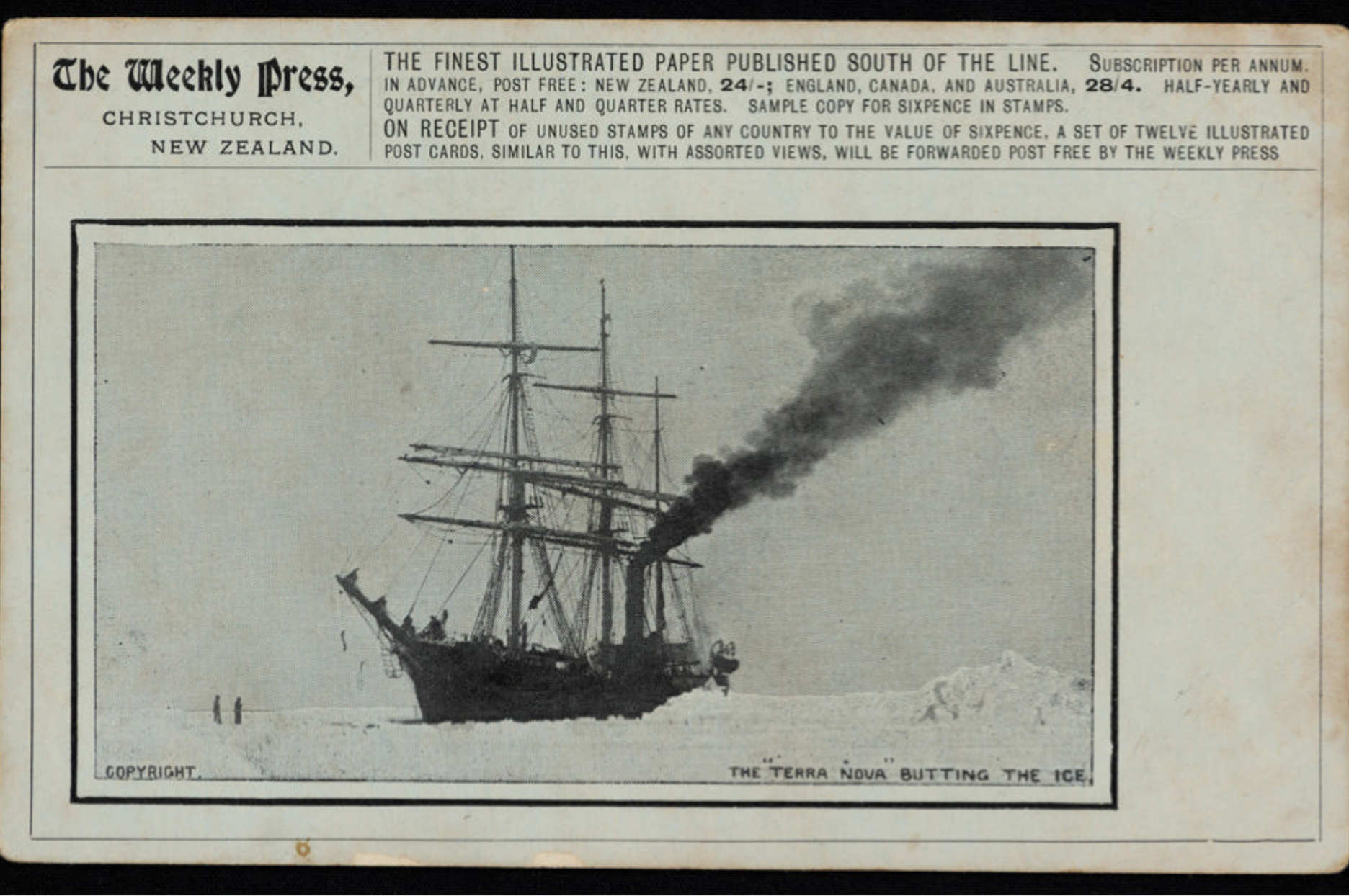
The Weekly Press Postcard, the ‘Terra Nova’ in the Antarctic Ice, 1910-13. Te Ūaka The Lyttelton Museum ref. 9921.1
“Scott’s second and final trip to Antarctica was in 1910-13. The party went south in the ‘Terra Nova’ and featured a strong scientific team. Scott wrote that the ‘Terra Nova’, built in 1884 for the Dundee whaling fleet, was… ”a wonderfully fine ice ship”. The photograph shows the small ‘Terra Nova’ breaking through the pack ice with engines producing black smoke that would be totally unacceptable today. Note the figures for scale.”
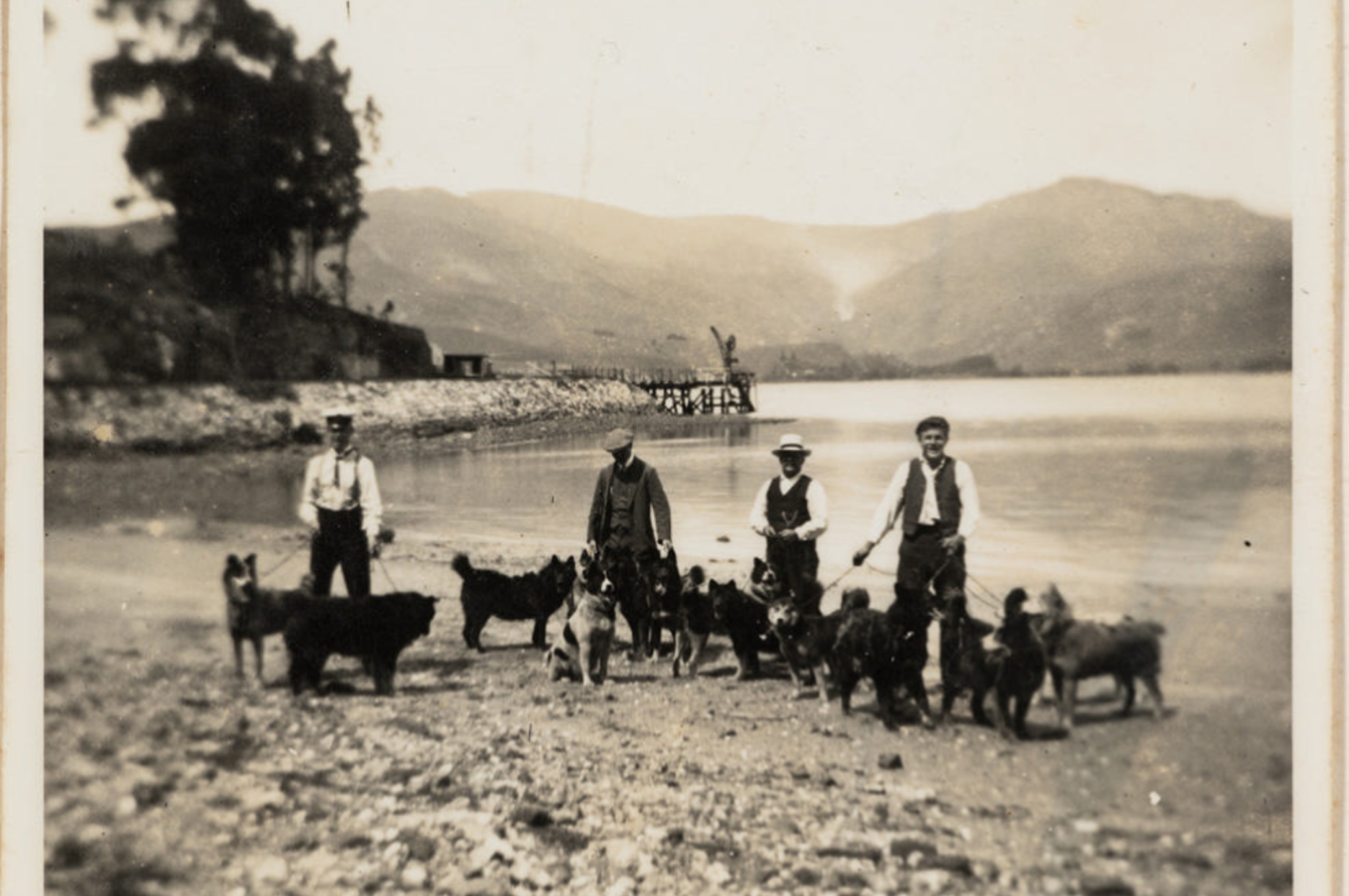
Approx. 13 dogs and four men on Quail Island in 1911, training for Antarctic Expedition. Te Ūaka The Lyttelton Museum ref. 11670.1
“The ‘Terra Nova’ also stopped at Lyttelton en route from the United Kingdom to Antarctica. Thirteen dogs were quarantined and trained on Quail Island* in Lyttelton Harbour, a location which could only be accessed by boat."
*Now known as Ōtamahua / Quail Island.
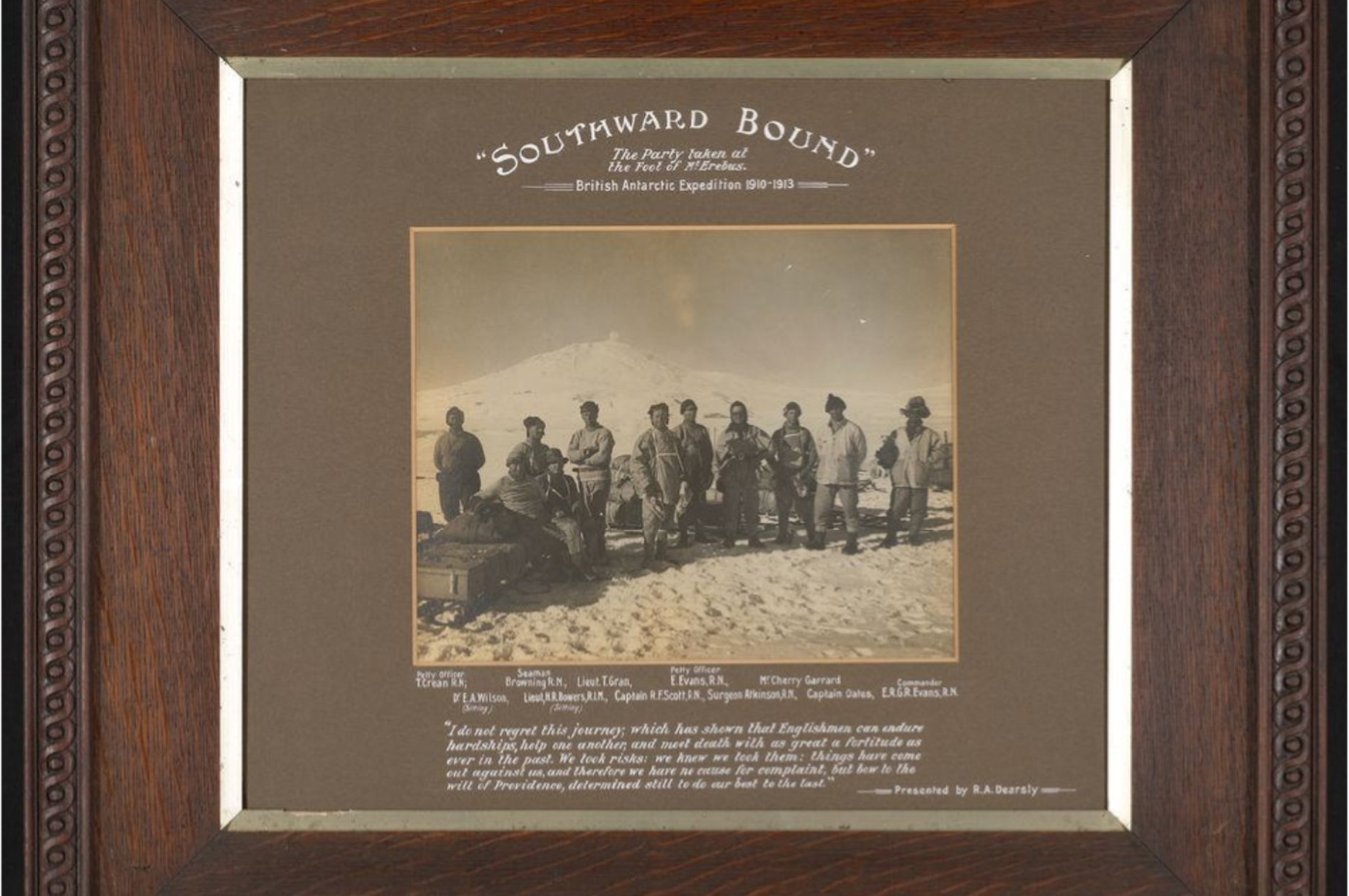
The Party at the foot of Mt Erebus during the British Antarctic Expedition 1910-1913. Unglazed, wooden frame. Te Ūaka The Lyttelton Museum ref. 14474.1
“The start of Scott’s sledging trip to the South Pole, with Mount Erebus in the background. Five individuals travelled to the Pole with others providing support on the way utilising motor sledges, ponies and dogs, all of which were less successful than anticipated. The trip did not end well. Scott was beaten to the South Pole by Amundsen, and his party of five perished on the return journey to Cape Evans.”
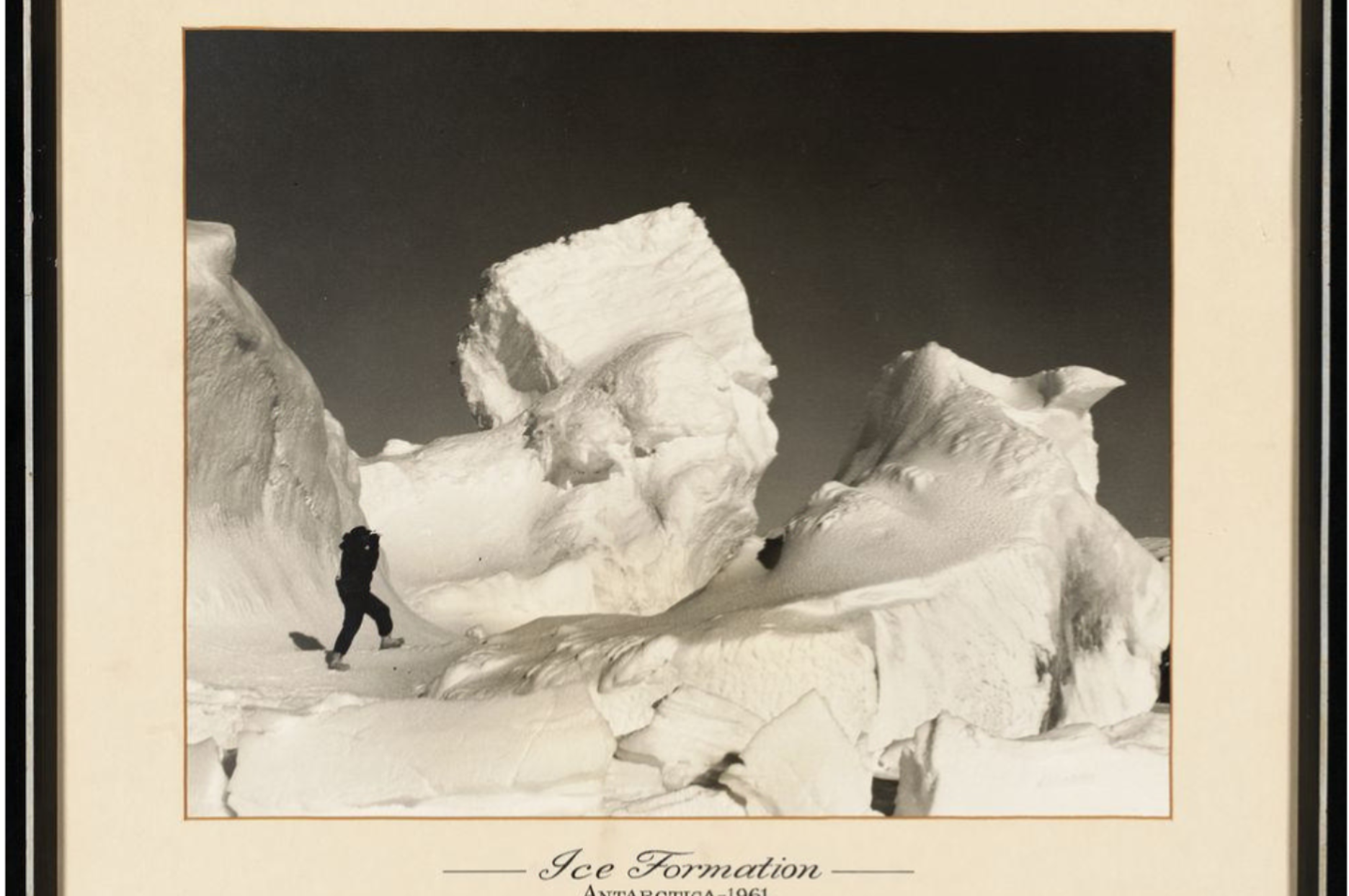
An unidentified figure stands next to an ice formation in Antarctica 1961. Te Ūaka The Lyttelton Museum ref. 14587.1
“Antarctica is a huge landmass covered in ice that takes many forms. It is a photographer’s paradise. This icescape was photographed in 1961.”
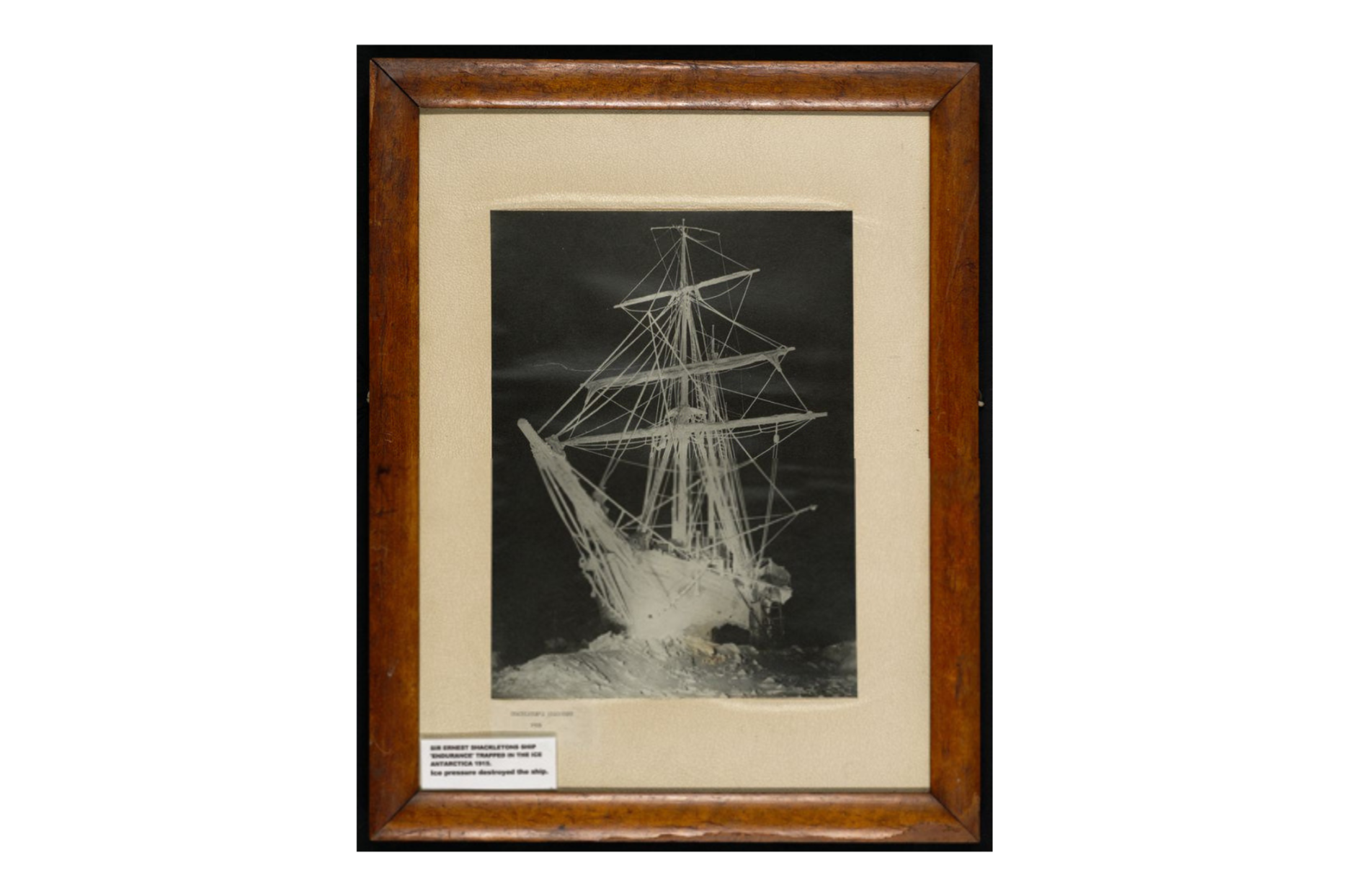
Image credit: Shackleton's ship the ‘Endurance’ trapped in the ice, Antarctica 1915. Photographer Frank Hurley. Glazed, wooden frame. Te Ūaka The Lyttelton Museum ref. 14560.1
“In 1914 Ernest Shackleton had planned a Trans-Antarctic crossing from the Weddell Sea to Ross Island via the South Pole. The ‘Ross Sea Party’ was put in on the opposite side of the continent to Shackleton, tasked with laying supply depots for Shackleton to use on the homeward leg, after the South Pole had been reached. The whole project was hindered by unforeseen events. Shackleton’s ship became trapped in Weddell Sea ice. This magical photograph of the ‘Endurance’ trapped in the pack was taken by Frank Hurley. The ship was later crushed by the ice, and sank. Shackleton and his men managed to get to Elephant Island where 22 of the crew were to live beneath upturned boats for the next four months. Meanwhile with five of his men, including Akaroa born Frank Worsley, Shackleton made an exhausting 1300 km journey across to South Georgia in the lifeboat, the ‘James Caird’, to eventually raise a rescue.”